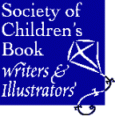
In the first month of release, box office sales of Narnia’s high-budget debut have topped the $530 million mark. With the much-anticipated success of The Lion, the Witch, and the Wardrobe, the news is official: we’ve entered the Age of Narnia.
Movie-goers and casual readers can’t help but want more. Some of us are encountering the wardrobe for the first time — and we’re as astonished as the four Pevensie children. But we need a guidebook, someone to whisper those behind-the-scenes details that will enrich our present and future journeys, and Jonathan Rogers’ The World According to Narnia is the perfect companion.
What was author C.S. Lewis thinking when he and J.R.R. Tolkien met to discuss characters and settings? From their years of friendly chats in the Inklings, Tolkien wrote The Hobbit and The Lord of the Rings; Lewis led a foursome of children through a wardrobe into Narnia.
While Lewis wrote his fiction, he simultaneously penned powerful non-fiction books and essays. Rogers has explored both in great detail. A former English professor himself, Rogers has written his own fantasy-adventure series, the Wilderking Trilogy. From this platform, he differentiates his book from the numerous other Narnia spinoffs out there.
Rogers says, “Lewis uses fantasy to talk about the real world because it takes imagination to see what’s true and real in this world too…From where we sit, the things of earth look so real and solid that it’s hard to believe there’s something more real and more solid…It takes a certain amount of imagination to see that God imbues every blade of grass, every conversation, every relationship with eternal meaning.”
Each chapter focuses on one of the seven Chronicles of Narnia, and Rogers leads you into a deeper awareness and appreciation of the symbolism. Here are some non-fiction books written by C.S. Lewis that you’ll see cited in The World According to Narnia:
–Mere Christianity
–Miracles
–A Preface to Paradise Lost
–The Screwtape Letters
–Of Other Worlds
–God in the Dock
–Surprised by Joy
–The Abolition of Man
–Pilgrim’s Regress
–The Four Loves
–They Asked for a Paper
–The Great Divorce
–The Weight of Glory
This is not a book to be read through once, then put on your shelf. It’s a reference guide that you’ll appreciate, every time you need a fresh reminder of what lies beyond the wardrobe door. (Which will come in handy, as the next film, Prince Caspian, is already in the works.)
Here’s an excerpt from chapter one. And here’s a review from BookPage and In the Library. If you want to know even more details about the author, you can go to his personal website or his Wilderking site.
What I take away most of all from reading The World According to Narnia is a deepening of my faith, an awareness of things that are real that I can’t see. This is the kind of faith I want to pass along to my children. I want to point them to the right books because as Rogers explains about Narnia, “the children know what to do because they have read the right imaginative stories.”
To step through the wardrobe is not only to see Narnia, but to get a glimpse of the mind of the Maker, which exists beyond this and all other worlds, and out of which they all derive.
Jonathan Rogers
Note: This post was edited 1/10/06 and appears published in the Blogcritics book review archives.





